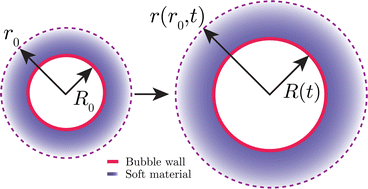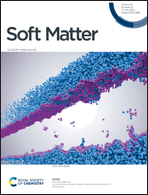Modeling high strain-rate microcavitation in soft materials: the role of material behavior in bubble dynamics
Abstract
Inertial Microcavitation Rheometry (IMR) is a promising tool for characterizing the mechanical behavior of soft materials at high strain rates. In IMR, an isolated, spherical microbubble is generated inside a soft material, using either a spatially-focused pulsed laser or focused ultrasound, to probe the mechanical behavior of the soft material at high strain rates (>103 s−1). Then, a theoretical modeling framework for inertial microcavitation, incorporating all the dominant physics, is used to extract information regarding the mechanical behavior of the soft material by fitting model predictions to the experimentally measured bubble dynamics. To model the cavitation dynamics, approaches based on extensions of the Rayleigh–Plesset equation are commonly used; however, these approaches cannot consider bubble dynamics that involves appreciable compressible behavior and place a limit on the nonlinear viscoelastic constitutive models that may be employed to describe the soft material. To circumvent these limitations, in this work, we develop a finite-element-based numerical simulation capability for inertial microcavitation of spherical bubbles that enables appreciable compressibility to be accounted for and more complex viscoelastic constitutive laws to be incorporated. We first apply the numerical simulation capability to understanding the role of material compressibility during violent spherical bubble collapse, and based on finite-element simulations, we propose a Mach-number-based threshold of 0.08, beyond which bubble collapse is violent, and the bubble dynamics involves compressibility not accounted for in Rayleigh–Plesset-based approaches. Second, we consider more complex viscoelastic constitutive models for the surrounding material, including nonlinear elastic and power-law viscous behavior, and apply IMR by fitting computational results to experimental data from inertial microcavitation of polyacrylamide (PA) gels in order to determine material parameters for PA gels at high strain rates.



 Please wait while we load your content...
Please wait while we load your content...